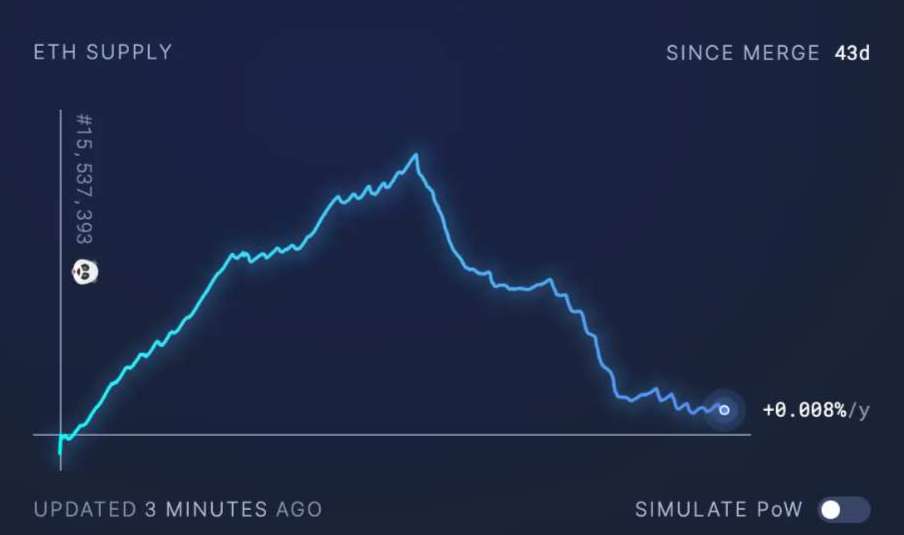Bankless data shows that since the transition of Ethereum to PoS mechanism, as of the 29th, only 1084 ETHs have been issued, which is equivalent to only 13.06 ETHs issued per day, and the annualized inflation rate is 0.008%. Continuing to operate under the PoW mechanism, 518,966 ETH will be issued during the same period, with an annualized inflation rate of 3.599%.

Bankless said that this means that despite being at the bottom of the bear market and the gas fee burning under EIP-1559 is at the lowest level, Ethereum has reduced the issuance by 99.99% under the PoS mechanism, and the impact of the merger has begun to appear.
Ethereum staking is too popular, yields fall
Meanwhile, according to Coindesk, Ethereum staking appears to have become the most popular new way for cryptocurrency traders to earn yields, but the popularity of staking has pushed yields down, according to Coinbase Institutional data. Staking yields are around 4% to 5%, well below analysts’ initial forecast of 9% to 12%.
Cryptocurrency analysts believe that the current problem is that before the completion of the next major upgrade of Ethereum, the “Shanghai Upgrade”, the withdrawal option does not exist, and investors cannot immediately withdraw the pledged ETH.
Nick Hotz, vice president of research at digital asset management firm Arca Funds, said:
You can only enter, but not exit.
According to Dune Analytics , there are currently 14.65 million ETH staked on the Ethereum blockchain, worth more than $2 billion, an increase of 7.5% compared to the end of the second quarter, and the total number of validators climbed to 458,067.
To become a validator or staker requires at least 32 ETH to be staked, but as more investors pour in and more ETH is deposited, the yield becomes lower and lower. Nick Hotz pointed out that the staking yield of Ethereum is usually determined by four variables: the total amount of ETH issued, the daily transaction fee, the burning rate and the amount of ETH that is pledged.
In fact, there is a formula that the annualized pledge yield of Ethereum is “[annual ETH total issuance + annual handling fee * (1-% of handling fee burning)] / annual average ETH pledge amount”, the pledged The amount of Ethereum is the denominator, and as the denominator grows, the yield will naturally decrease.






